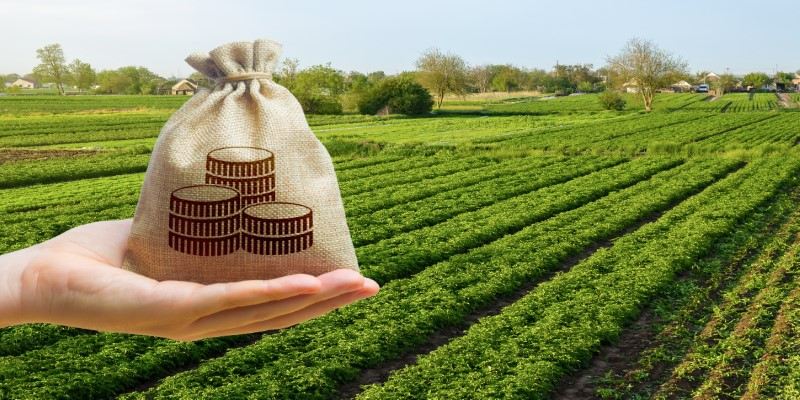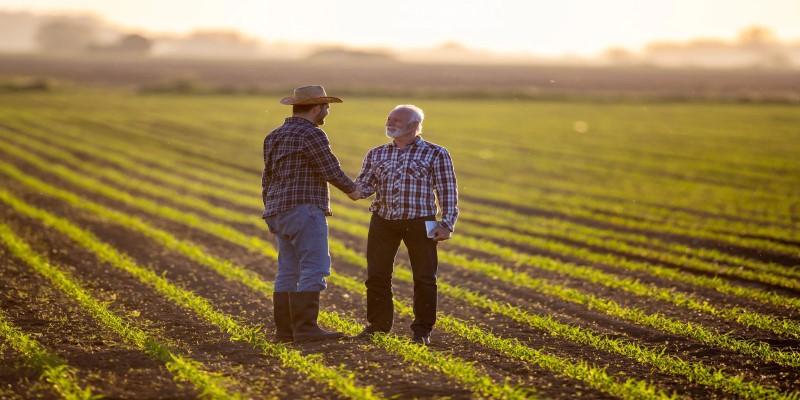5 Best Strategies for Investing Farmland: Beginner’s Guide
Its popularity has grown during the last few years and for a good reason. Farmland, compared to other investment opportunities, can bring both financial stability and long-term growth potential. With an upward trend of the population within the world and a rise in demand for food and agricultural resources, farmland is looked at as one of the essential and potentially lucrative asset classes. How do you begin investing in farmland? This guide covers five smart and practical ways that will help you navigate this growing market, from the most hands-on involvement to a more passive investment strategy.

Five Smart Ways to Invest in Farmland
1. Buying Farmland Directly
One of the most traditional and literal methods is the purchase of farmland outright. Because you own the land, you, therefore, control its use; either you may be letting farmers into its cultivation or producing crops or holding onto it with the hope of appreciating its value further. It is the best means for investors who want a tangible asset and are ready to be more actively involved with their agricultural investment.
When buying farmland, location is everything. Factors like soil quality, water availability, climate, and proximity to markets can significantly impact the land’s productivity and value. For example, regions with established agricultural infrastructure or high demand for specialty crops often yield better returns.
While it is highly profitable, direct ownership involves heavy capital and risks such as weather volatility, changing market conditions, or management responsibilities over a property. For those with the time and resources, though, direct ownership provides the greatest opportunity for hands-on involvement and profit.
2. Joining Farmland Syndicates
Farmland syndicates offer a collaborative approach to investing. In this model, groups of investors pool their money to purchase farmland collectively, allowing them to share the costs, risks, and rewards. This method is particularly appealing for those who want exposure to farmland without the high upfront costs of buying land individually.
Syndicates typically employ professional managers to oversee operations. This could involve leasing the land to farmers, growing specific crops, or exploring innovative farming methods like organic or regenerative agriculture. By pooling resources, syndicate members can access larger or higher-quality farmland than they might afford on their own.
However, this method also involves shared decision-making and potential conflicts among investors. Choosing a reliable syndicate with transparent management is key to ensuring a successful partnership. For beginners, this is a relatively low-risk way to diversify their portfolio and tap into agriculture investment opportunities.
3. Farmland Real Estate Investment Trusts (REITs)

For those who prefer a more hands-off and liquid investment, farmland REITs are an excellent option. These investment vehicles allow you to buy shares in companies that own or manage farmland properties. REITs are traded on public stock exchanges, making them accessible to a wide range of investors.
Farmland REITs are ideal for people who want to invest in agriculture without directly owning or managing land. They provide a steady stream of income through dividends while offering diversification across different regions and types of crops. For instance, some REITs specialize in high-value crops like nuts or vineyards, while others focus on staple grains or livestock.
One major advantage of REITs is their flexibility; investors can easily buy or sell shares without the long-term commitment of direct land ownership. However, REIT performance can be affected by broader market trends and the efficiency of the management team. Despite these factors, farmland REITs are a great way to dip your toes into farmland investment while maintaining liquidity and ease of access.
4. Leasing Farmland for Passive Income
Leasing farmland to farmers is a popular option for those who want to own land but prefer not to be involved in day-to-day operations. In this model, the investor purchases farmland and rents it out to experienced farmers who handle the cultivation, harvesting, and maintenance.
Leasing provides a stable and predictable income stream, as rental agreements are typically long-term and tied to the productive capacity of the land. This arrangement also shields investors from the operational risks and labor-intensive aspects of farming.
To ensure success, finding reliable tenants is crucial. Tenants with proven track records in agriculture are more likely to use the land efficiently and maintain its fertility. Additionally, investors should stay informed about market trends to adjust lease rates accordingly and maximize returns. Leasing is an attractive option for investors who value steady cash flow and low involvement while still benefiting from farmland’s growth potential.
5. Crowdfunding Platforms for Farmland Investments

In the digital age, crowdfunding has opened up farmland investment to a broader audience. Crowdfunding platforms allow individuals to invest small amounts in larger agricultural projects, such as farmland purchases, sustainable farming initiatives, or specialty crop production.
This method is particularly appealing to first-time investors or those with limited capital. Platforms often provide detailed project descriptions, expected returns, and timelines, making it easier for investors to make informed decisions. Some platforms even allow investors to focus on specific goals, such as supporting organic farming or promoting sustainable practices.
While crowdfunding democratizes farmland investment, it comes with higher risks compared to other methods. Returns depend on the success of the project and the platform’s reliability. Additionally, these investments are less liquid than REITs or syndicates. However, for those looking to enter the farmland market with minimal upfront investment, crowdfunding offers an accessible and impactful way to contribute to agriculture.
Conclusion
Farmland investment offers a compelling blend of financial security and societal impact. Whether you're interested in hands-on ownership, collaborative approaches like syndicates, liquid options like REITs, or innovative methods like crowdfunding, there's an investment style to suit your goals. Each method carries its opportunities and challenges, from the independence of direct ownership to the accessibility of crowdfunding platforms. As the global demand for food and sustainable resources continues to grow, farmland remains a resilient and rewarding asset class.












